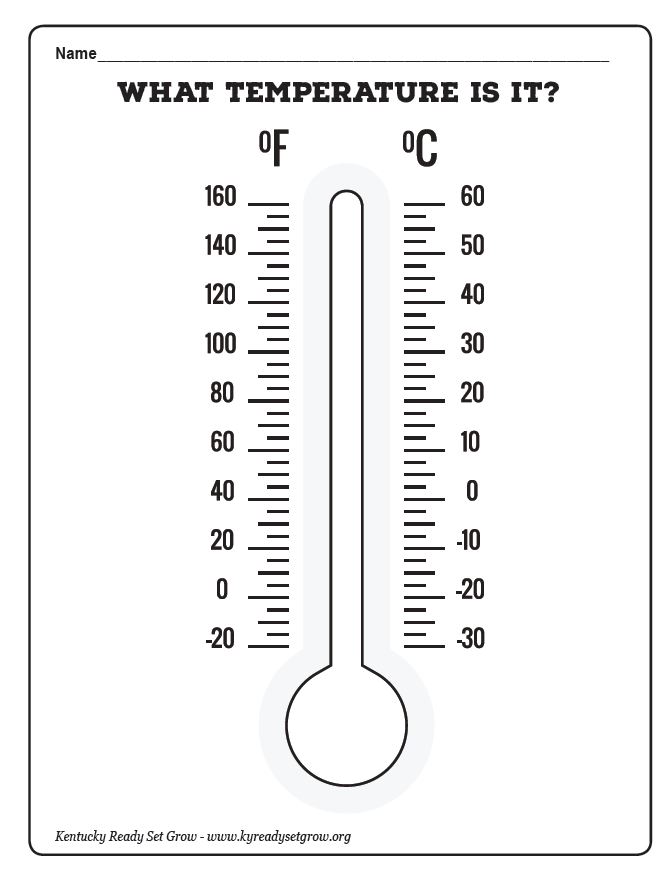How to Use a Thermometer
Review with children how to count by 10s. Start at zero and count to 100.
Explain to children, while holding up a large thermometer, that thermometers count by 10s. Ask specific students to point out where certain numbers are, such as 40 or 60.
Point out the smaller marks in between each number. Explain that the largest mark that is in between each number is half way between the number below it, and the number above it. For example, the largest mark between 20 and 30 is 25.
Explain that each small mark goes up by one. There are nine small marks between each two numbers (1-4 and 6-9) and one larger make which we already know as the middle mark. Point out specific numbers like two marks above 90 is 92, or seven marks above 10 is 17.
Talk to the children about the red line in the middle of the thermometer. Explain that it is either mercury, alcohol, or a similar chemical that interacts with the temperature outside, or how hot it is, which makes the red line move up or down. The number that the red line stops at is the number of the current temperature. Explain how if the red line goes up into higher numbers, it is getting hotter, and if it goes down to lower numbers, it is getting colder.
Note what temperature the thermometer says inside, then place the thermometer outside and let it sit for a couple hours. Show students the difference on the thermometer, compared with the difference in how the temperature felt between inside and outside.
Do multiple exercises explaining how thermometers go up by 10s before introducing the small marks in between the numbers. Practice reading a thermometer to ensure students understand the concept.
The practice thermometer sheet below may be helpful. If the sheet is laminated, the teacher may call out temperatures and have students draw a red mark up the middle with a dry erase marker to show what they know.


